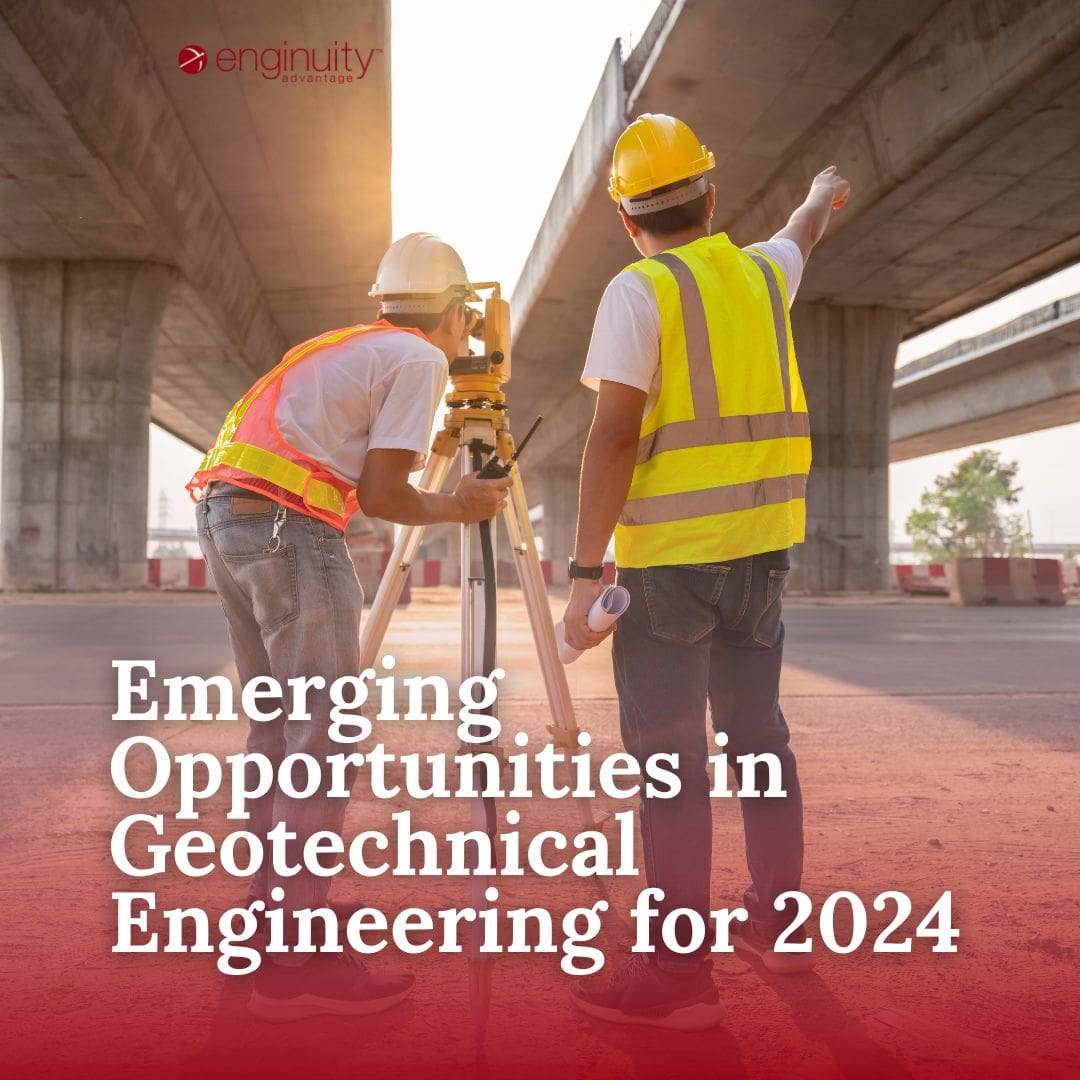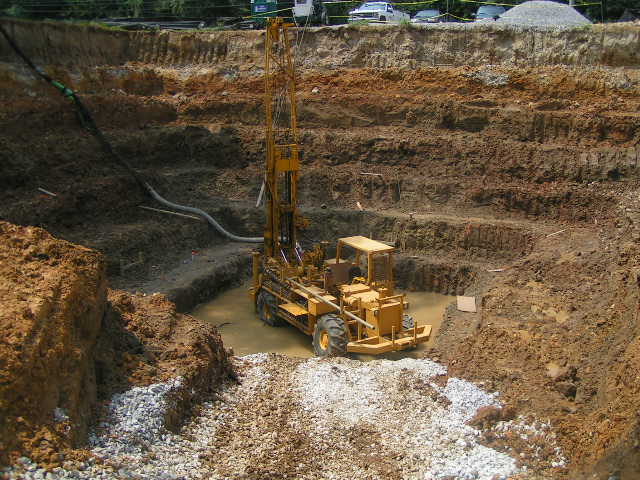Geo Tech Engineer: Enhancing Site Assessments with Advanced Geotechnical Techniques
Geo Tech Engineer: Enhancing Site Assessments with Advanced Geotechnical Techniques
Blog Article
The Interdisciplinary Approaches in the Geotechnical Industry: Connecting the Space In Between Engineering, Geology, and Environmental Scientific Research for Ideal Task Outcomes
The integration of engineering, geology, and environmental scientific research within the geotechnical market is not just advantageous; it is important for accomplishing optimal job outcomes. This interdisciplinary collaboration cultivates an extensive understanding of complicated site conditions, enabling innovative options to emerge. By examining crucial roles and successful case research studies, we can discover the dynamic interplay that drives task success. Nonetheless, difficulties continue to be in effectively managing these multidisciplinary initiatives, questioning regarding potential developments and future fads. What strategies might emerge to promote this essential collaboration and enhance the efficacy of geotechnical techniques?
Importance of Interdisciplinary Partnership
The relevance of interdisciplinary cooperation in the geotechnical market can not be overstated. Reliable geotechnical tasks require the integration of varied know-how from various areas, consisting of engineering, geology, and environmental science. This cooperation makes sure that all elements of a task are taken into consideration, leading to detailed services that deal with complex obstacles.
Interdisciplinary cooperation promotes development by allowing experts to share insights and methods that might not appear when operating in isolation (geotechnical engineers). By leveraging the staminas of multiple techniques, teams can identify possible risks, enhance style procedures, and enhance the sustainability of geotechnical projects. Moreover, such collaboration promotes an all natural understanding of site-specific problems, which is essential for accurate assessment and decision-making.
The complexity of geotechnical projects requires a collaborated approach to analytical. When designers, geologists, and ecological scientists work with each other, they can develop a cohesive technique that straightens technological requirements with environmental factors to consider and governing conformity. This synergy not only improves project outcomes yet additionally adds to the long-term durability of framework. Ultimately, interdisciplinary partnership is necessary for progressing ideal practices and attaining excellence in the geotechnical market.
Trick Roles of Each Self-control
Partnership amongst different self-controls is not simply beneficial; it is important for the effective implementation of geotechnical tasks. Each self-control-- engineering, geology, and ecological scientific research-- plays a distinctive yet interconnected role that contributes to project efficiency and sustainability.
Geotechnical engineers are largely in charge of designing structures and making sure structural honesty. They examine dirt and rock properties to analyze load-bearing capacities, supplying important data for risk-free building and construction techniques. Their experience enables the formula of ingenious remedies to complicated obstacles.

Ecological scientists examine the possible influences of construction on communities and water resources. They perform environmental analyses and create mitigation methods to lessen adverse impacts. By integrating eco-friendly considerations, they guarantee compliance with guidelines and advertise sustainability throughout the task lifecycle.
Study of Effective Integration
Effective assimilation of geotechnical disciplines can be exemplified through numerous study that highlight the effectiveness of teamwork in attending to complex engineering difficulties. One noteworthy example is the building and construction of the Hong Kong-- Zhuhai-- Macau Bridge, where a joint method involving geotechnical design, geology, and ecological science was crucial. Designers and rock hounds worked in unison to analyze the seabed index conditions and maximize the structure design, ensuring stability and lessening environmental impact.
One more impactful situation is the renovation of incline stability in the San Francisco Bay Area, where an interdisciplinary group integrated geotechnical analysis with environmental evaluations. By integrating hydrological studies and geological surveys, the group efficiently determined prospective landslide dangers and implemented reliable reduction procedures, improving security and sustainability.
Moreover, the redevelopment of Brownfield sites usually needs a multidisciplinary method. In one instance in Chicago, partnership amongst geotechnical engineers, ecological researchers, and city coordinators resulted in the effective removal of contaminated dirt, permitting the safe improvement of the site into a neighborhood park. These situation researches highlight that interdisciplinary cooperation not just addresses technical obstacles yet likewise fosters ingenious options that profit both projects and communities.
Obstacles in Multidisciplinary Projects

Additionally, working with routines and process amongst various groups can be troublesome, specifically when each self-control has one-of-a-kind project landmarks and deliverables. This imbalance can cause hold-ups and increased costs. The obstacle of source allocation also impends large; making sure that specific know-how is offered at critical times needs cautious planning and foresight.
Lastly, regulative compliance presents an additional substantial challenge. Each self-control may deal with various regulatory structures, and aligning these demands to fulfill job purposes can be complicated and time-consuming. Resolving these challenges demands solid management and reliable interaction strategies to cultivate cooperation and make certain that multidisciplinary teams function cohesively towards shared goals.
Future Trends in Geotechnical Practices
As the geotechnical market develops, arising trends are improving techniques to deal with the obstacles dealt with in multidisciplinary tasks - consulting engineer. One significant fad is the enhanced assimilation of sophisticated technologies, such as expert system and machine learning, into geotechnical analysis and style. These technologies enhance anticipating modeling and danger evaluation, enabling designers to make more educated choices throughout the job lifecycle

Additionally, the adoption of digital twins and real-time monitoring systems is coming to be much more prevalent. These devices help with recurring assessment of soil conditions and architectural performance, permitting timely treatments when issues occur.
Verdict
In verdict, the combination of engineering, geology, and ecological science is vital for achieving optimum results in the geotechnical industry. Interdisciplinary cooperation promotes development, enhances analytical capacities, and aligns technical demands with environmental sustainability. Effective study highlight the advantages of this technique, while recognizing the obstacles dealt with in multidisciplinary projects. Looking ahead, welcoming these joint practices will imp source be necessary for browsing future trends and advancing the field of geotechnical engineering.
The assimilation of engineering, geology, and ecological science within the geotechnical sector is not merely useful; it is critical for accomplishing ideal job try this web-site outcomes. Efficient geotechnical tasks call for the assimilation of varied proficiency from numerous areas, consisting of engineering, geology, and ecological science.Browsing the complexities of multidisciplinary tasks in the geotechnical market offers a number of significant difficulties.As the geotechnical sector advances, arising patterns are improving methods to deal with the obstacles encountered in multidisciplinary projects. Geotechnical engineers are significantly collaborating with environmental researchers to ensure that jobs line up with sustainability objectives and conform with governing requirements.
Report this page